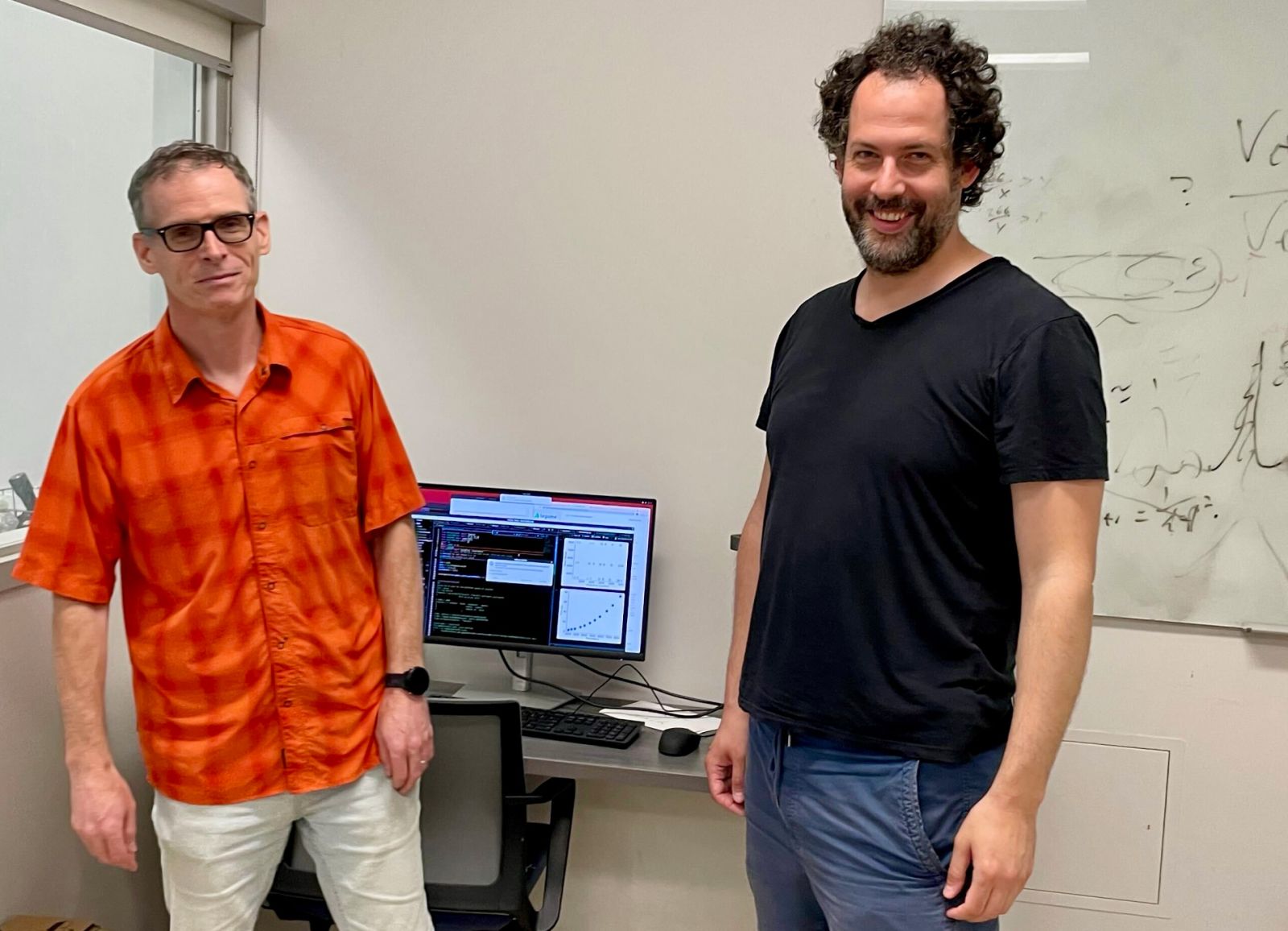
Drs. Stephen Hughes and Nir Rotenberg.
NSERC fund focuses on research in quantum optical science
Faculty of Arts and Science researcher Nir Rotenberg and his research team have received a $2.49 million Alliance Quantum Grant from the Natural Sciences and Engineering Research Council of Canada. The grant is designed to promote high-impact research and commercialization of quantum science and technology in Canada.
The research team of Drs. Rotenberg and Stephen Hughes (Department of Physics, Engineering Physics & Astronomy), Li Qian (University of Toronto) and Dan Dalacu and Marek Korkusinski (University of Ottawa) are working with Quantum Bridge, a quantum startup from Toronto that specializes in quantum cryptography and communications.
“Quantum cryptography guarantees secure communication, and quantum computers will be able to solve certain problems exponentially faster than any classical computer,” Dr. Rotenberg explains. “This proposal aims to engineer optoelectronic nanostructures (typically used in devices such as solar cells, light-emitting diodes, and lasers) to enable them to emit specialized photon chains in which these individual light pieces are “tied together.”
Photons that are connected in this way are said to be entangled, so that influences to one photon can be immediately detected by another, no matter how far apart they may be. These quantum light states are crucial to many applications in quantum technologies, underlining the importance of the development of their sources.
Dr. Rotenberg adds there is currently a worldwide effort to create reliable entangled sources of light. While there exist several theoretical proposals for how to do this, to date even entangling four or five photons can only be achieved with success rates of a fraction of a fraction of a percent. This proposal aims to develop new on-chip platforms to bring this success rate to nearly 100 per cent and drastically increase the number of entangled photons. To do so, the team will use “artificial atoms” known as quantum dots, which their collaborators at the National Research Council of Canada grow.
Dr. Hughes, a co-applicant on this grant explains, “This ability to deterministically manufacture such a system is a uniquely Canadian ability, and it is our intention to develop a viable technology for efficient quantum light sources. Such sources will benefit the Canadian economy and all Canadians through the creation of practical systems for completely secure communications for data protection. Furthermore, our research explored both cutting edge quantum optical science as well as having the potential to stimulate Canadian start-up companies working in quantum technologies.”
Canada has been recognized as a world leader in the commercial development of the “classical” optical communications systems upon which the internet is based, and it is also home to one of the first companies in the world committed to develop practical quantum information processing technologies. Dr. Rotenberg says there is every reason to believe that Canada can play a similarly pivotal role in the commercial development of quantum optical information technologies as they rapidly mature.
“This grant allows us to substantially grow the quantum photonic teams at Queen’s, which work to address some of the most pressing challenges in this strategic field, while funding research that pushes the boundaries of current quantum science and technology,” says Dr. Rotenberg. “We are also going from strength to strength in areas of research related to nanophotonics and quantum optics, building on other high profile research grants. These initiatives are turning Queen’s into one if the leading research institutions to carry out cutting edge and applied research in quantum optical science.”

